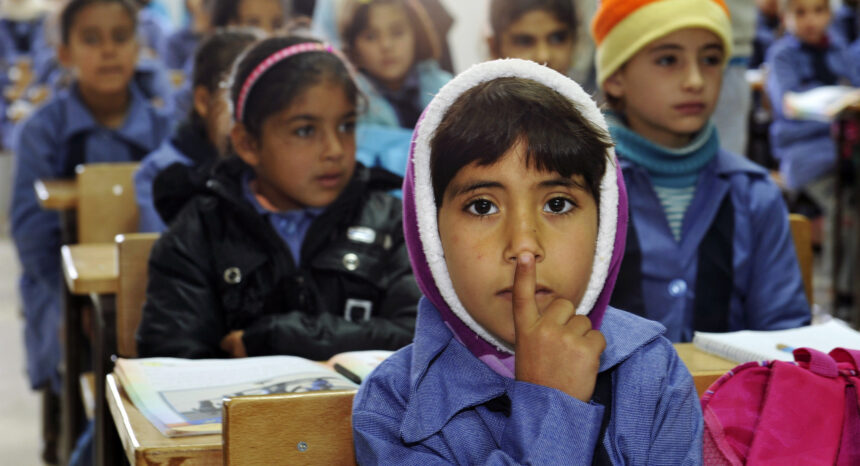Teenage immigrants have a harder time adjusting to their new country than young children. They attend fewer years of school and earn less money as adults, a new study finds.
The issue: About 15 percent of the world’s migrants are under the age of 20. That’s almost 37 million people, according to the United Nations. How to assimilate them is important to policymakers as well as the broader public in their adopted homes.
Some researchers have labeled this group the “1.5 generation,” to differentiate them from their parents (the first-generation immigrants who were born and raised abroad) and from the second generation – people born and raised entirely in a country new to their parents.
Members of the 1.5 generation can struggle to adapt, especially when they arrive as adolescents with weak language skills. Researchers have shown that young children learn new languages far more easily than adolescents or adults and that these new language skills enable them to learn more subjects with greater ease.
A new paper tries to deepen our understanding of how immigration impacts children of different ages in the long-run.
An academic study worth reading: “Age at Arrival and Life Chances Among Childhood Immigrants,” in Demography, 2017.
Study summary: Are Skeie Hermansen, a sociologist at the University of Oslo in Norway, hypothesized that the moment of immigration is a “decisive turning point” in a child’s life and that timing could impact work and economic prospects for the rest of his or her life.
To determine how migration at different ages influences children, he studied siblings who were born in Norway to foreign-born parents or had arrived as children in Norway between the late 1960s and 2000. The children he included were all still living there in 2012.
“Sibling comparisons offer a way to adjust for selective timing of childhood immigration and bias from related family-level characteristics shared by siblings,” Hermansen argued.
He then compared their education and employment outcomes for the period 1993 to 2012, whenever the children reached age 30 (meaning they had been in Norway for a minimum of 12 years). He ended up with a sample size of 17,372 – “4,449 of whom were born in Norway and 12,923 of whom were born abroad.”
Thanks to detailed government statistics, Hermansen was able to measure their years of education and earnings based on tax reports (at fixed 2012 prices that he converted to U.S. dollars). With data from the Norwegian Labor and Welfare Service, he also measured whether the person attained a management role after age 29.
He also collected information on their parents’ educational attainment and the child’s country of birth (among 155 countries in the sample, differentiated into five regions).
Findings:
- Those who arrive as adolescents (ages 13 to 18) attend 0.4 to 0.8 fewer years of school compared to Norwegian-born children of immigrants.
- On average, those who arrive as adolescents earn almost $9,000 less annually as adults compared to Norwegian-born children of immigrants, or between 13 percent and 20 percent less overall.
- They are also 9 percent less likely to have stable employment as adults and 11 percent more likely to be on social welfare.
- Hermansen claims to have established causality by looking at variation within families – that is, between siblings.
- About 50 percent of children born in Norway to foreign-born parents achieve professional/managerial roles. Among children who arrived in Norway as adolescents, the figure is 28 percent.
- Hermansen does not find any “abrupt turning point” in the age-at-arrival effect, but instead “a pattern of gradual decline” where children who arrive at older ages are less likely to achieve. Put another way, he finds “a progressively more negative relationship between children’s age at arrival and adult outcomes, indicating that the experience of immigration at later stages of childhood development leaves a lasting impact on children’s later-life outcomes.”
- The age-at-arrival effects are strongest for children arriving from developing countries. The effects are weaker for children immigrating from other European countries and North America, which are generally more developed.
- “High parental education does not substantially alleviate the disadvantages related to immigration at older ages.”
- There is little age-at-arrival variation between genders.
Helpful resources:
- The International Organization on Migration (IOM), a United Nations agency, publishes up-to-date figures for migrants fleeing wars in the Middle East, along with extensive other research on the topic of migration.
- The Organization for Economic Cooperation and Development (OECD) – a rich-country think tank – conducts the triennial Program for International Student Assessment (PISA) standardized test of 15 year olds in up to 72 countries every three years.
- The UN Population Division publishes extensive international demographic data.
- The Pew Research Center frequently publishes on the topic of migration.
- The European Union published this 2016 policy review on migration.
- The U.S. Department of Education publishes a variety of reports about public school students who are learning English as a second language. These students, many of whom are child immigrants, are referred to as English Learners, or ELs.
- The National Conference of State Legislatures tracks state provisions that allow undocumented immigrants to pay in-state tuition rates at public colleges and universities. Eighteen states offer lower tuition rates to undocumented students. Alabama and South Carolina prohibit undocumented immigrants from attending any of their public post-secondary institutions.
Other research:
- This 2015 paper examines the socialization of young migrants in Sweden.
- This 2012 paper looks at education attainment among child migrants to the U.S.
- This 2011 paper looks at language skills and adult earnings of immigrants who arrived in the U.S. as children.
- Journalist’s Resource has profiled a number of studies on immigration, including effects on employment and on public attitudes.
Keywords: immigrant, migrant, Syria, Iraq, Mexico, Central America, Afghanistan, refugee, Mediterranean, Scandinavia


Expert Commentary